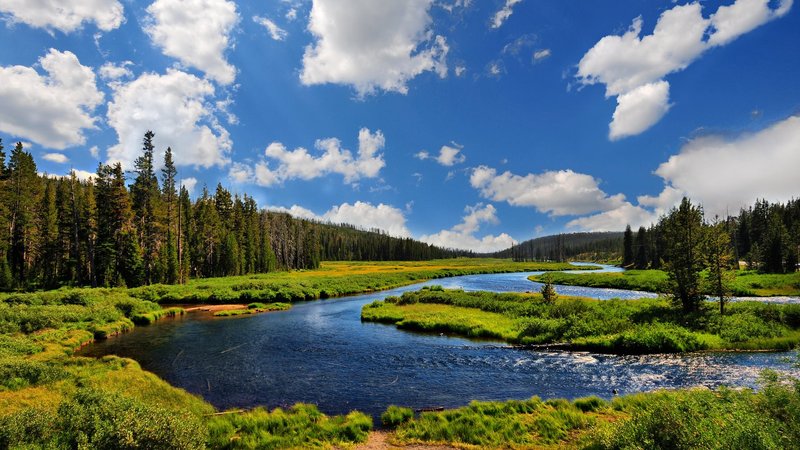
River dolphins are often considered indicators of the overall health of their environment. Their presence signals a thriving ecosystem, while their decline can indicate serious environmental issues. In this article, we’ll explore how these beautiful creatures fit into their habitats, their feeding habits, and their interactions with other species. By understanding the role of river dolphins, we can appreciate not just their beauty but also their importance in maintaining the ecological balance of our rivers.
Understanding River Dolphins
River dolphins belong to a group of cetaceans that live in freshwater rivers and lakes. Unlike their oceanic cousins, river dolphins are specially adapted to navigate murky waters, where visibility can be quite low. They have smaller eyes and rely more on echolocation to hunt and communicate. This incredible ability allows them to “see” with sound, making them remarkably adept at locating prey and avoiding obstacles.
There are several species of river dolphins, with the most notable being the Amazon river dolphin, the Ganges river dolphin, and the Yangtze river dolphin. Each species has its own unique adaptations and behaviors, shaped by the different river environments they inhabit. For instance, the Amazon river dolphin is known for its pink hue, which can change shades based on the water conditions, while the Ganges river dolphin is almost blind and relies heavily on its sonar capabilities.
Living in often challenging environments, river dolphins have evolved to meet those challenges head-on. They thrive in freshwater systems that can be both beautiful and harsh, showcasing the incredible adaptability of life.
The Role of River Dolphins as Predators
One of the most critical roles river dolphins play in their ecosystems is that of a predator. These dolphins primarily feed on fish, crustaceans, and other small aquatic creatures, which helps control prey populations. This balancing act keeps the ecosystem healthy and thriving.
You might be wondering how exactly these dolphins hunt in the often murky waters of their river homes. Well, they use a combination of echolocation and teamwork to catch their prey. By emitting sound waves that bounce off objects, they can locate schools of fish with surprising accuracy. Sometimes, they even work together to corral their prey into tight groups, making it easier for them to feast.
In this way, river dolphins not only feed themselves but also contribute to the overall health of fish populations in their habitats. When one part of an ecosystem is thriving or struggling, it sets off a chain reaction. Healthy dolphin populations often indicate a balanced food web, while declining dolphin numbers can signal issues in fish populations or water quality.
The Importance of River Dolphins to Biodiversity
River dolphins are valuable members of their ecosystems because they contribute to biodiversity. Biodiversity refers to the variety of life in a particular habitat, which is crucial for its resilience and stability. When diverse species interact with one another, they create a web of life where each organism plays a role.
By hunting various fish and other aquatic animals, river dolphins help maintain balanced populations of these species. This is especially important in freshwater habitats, which can be more vulnerable to environmental changes than ocean ecosystems. Biodiversity ensures that if one species faces challenges, others can help fill the gaps and maintain the ecosystem’s health.
In addition to their role as predators, river dolphins also influence the behavior of other animals around them. For instance, when dolphins are present, certain fish species may become more cautious, shifting their behavior to avoid becoming prey. This interaction creates a dynamic ecosystem where species must adapt and evolve, adding to the richness of life within the river.
Threats to River Dolphins and Their Ecosystem
Unfortunately, river dolphins face numerous threats that jeopardize their survival and, by extension, the health of their ecosystems. Habitat loss is one of the most significant issues. Rivers are often dammed or diverted for agriculture, urban development, and industry, which can alter water flow and reduce the dolphin’s habitat.
Another major threat is pollution. Chemicals, plastics, and waste can contaminate the waters, affecting not only dolphins but also their prey. As top predators, dolphins are particularly vulnerable to the toxins that accumulate in their bodies through the food chain. This means that if fish populations are affected by pollution, it can have a direct impact on the dolphins that rely on them for sustenance.
Lastly, overfishing can drastically reduce the availability of food sources for river dolphins. As human populations grow and demand increases for aquatic resources, fish stocks can decline, putting pressure on dolphins to find alternative food sources. This creates a precarious situation, where declining food availability can lead to a drop in dolphin populations.
Conservation Efforts for River Dolphins
Given the various threats to river dolphins, many conservation efforts are underway to protect these remarkable creatures and their habitats. Organizations around the world are working to raise awareness about the importance of river dolphins and advocating for cleaner, healthier river ecosystems.
Protected areas are being established to safeguard river habitats, reducing the impact of human activities. These sanctuaries provide safe spaces for dolphins to thrive and help maintain biodiversity in river systems. For instance, the Amazon River Basin has designated regions for the protection of the Amazon river dolphin.
Another effective approach is community engagement. Many conservation programs focus on working with local communities to promote sustainable fishing practices and reduce pollution. By educating people about the importance of river dolphins and the health of their ecosystems, these initiatives can foster a sense of responsibility towards preserving their natural surroundings.
Finally, researchers are actively studying river dolphin populations to gather data that can inform conservation strategies. By understanding the behavior, genetics, and ecology of these dolphins, scientists can develop targeted actions to ensure their survival.
Why River Dolphins Matter to All of Us
You might be thinking, “What does a river dolphin have to do with my everyday life?” Well, river dolphins are more than just cute creatures swimming in our rivers. They are part of a delicate balance that affects everything from water quality to local economies. Healthy ecosystems provide clean drinking water, support fisheries, and contribute to the overall well-being of communities.
By protecting river dolphins, we’re also protecting the ecosystems they represent. This creates a ripple effect; when we safeguard these habitats, we ensure a sustainable environment for future generations. It’s about more than just saving one species; it’s about preserving the web of life that sustains us all.
In this interconnected world, the health of river dolphins directly reflects the health of our planet. By being conscious of our environmental impact and supporting conservation efforts, we can play a part in ensuring that river dolphins thrive for years to come.
In closing, river dolphins are not just charming inhabitants of our rivers; they are vital components of their ecosystems. Their role as predators helps maintain balance and biodiversity, while their presence serves as an indicator of environmental health. By understanding their importance, we can take steps to protect these unique creatures and the ecosystems they inhabit, ensuring a harmonious relationship between humans and nature.

